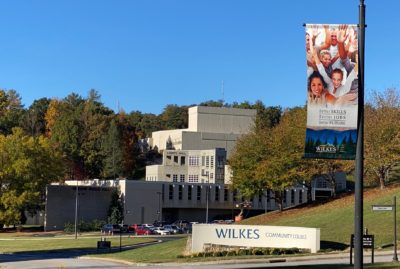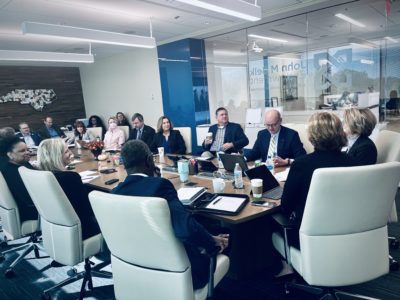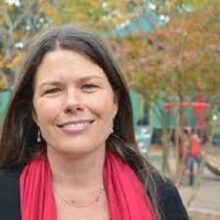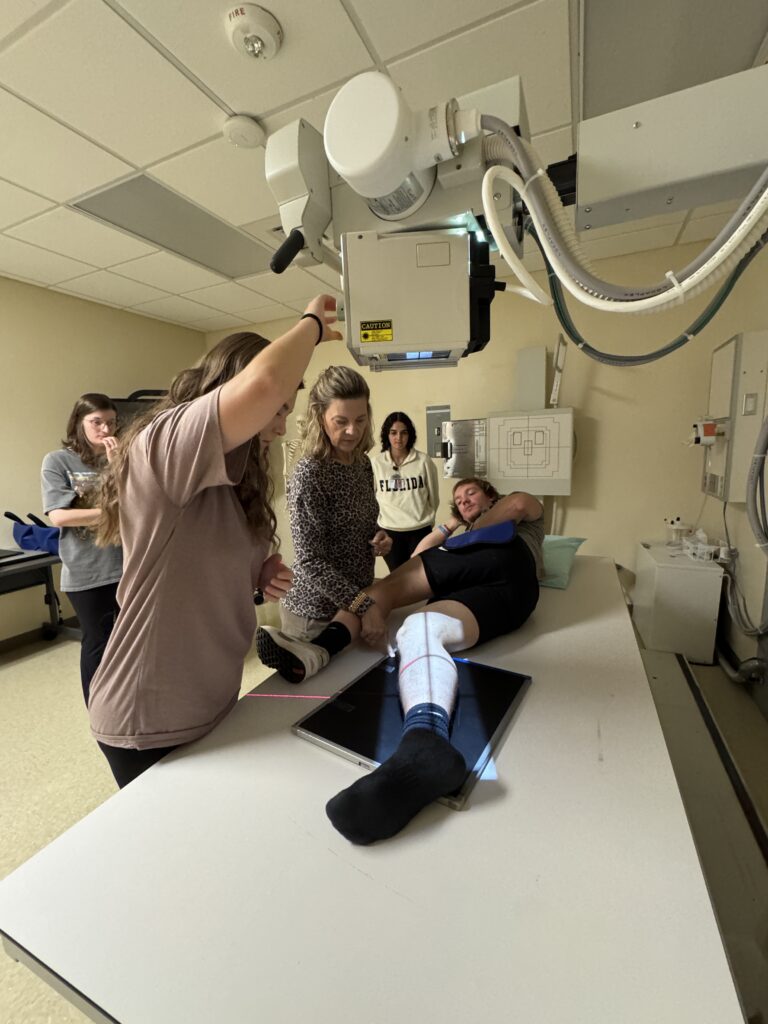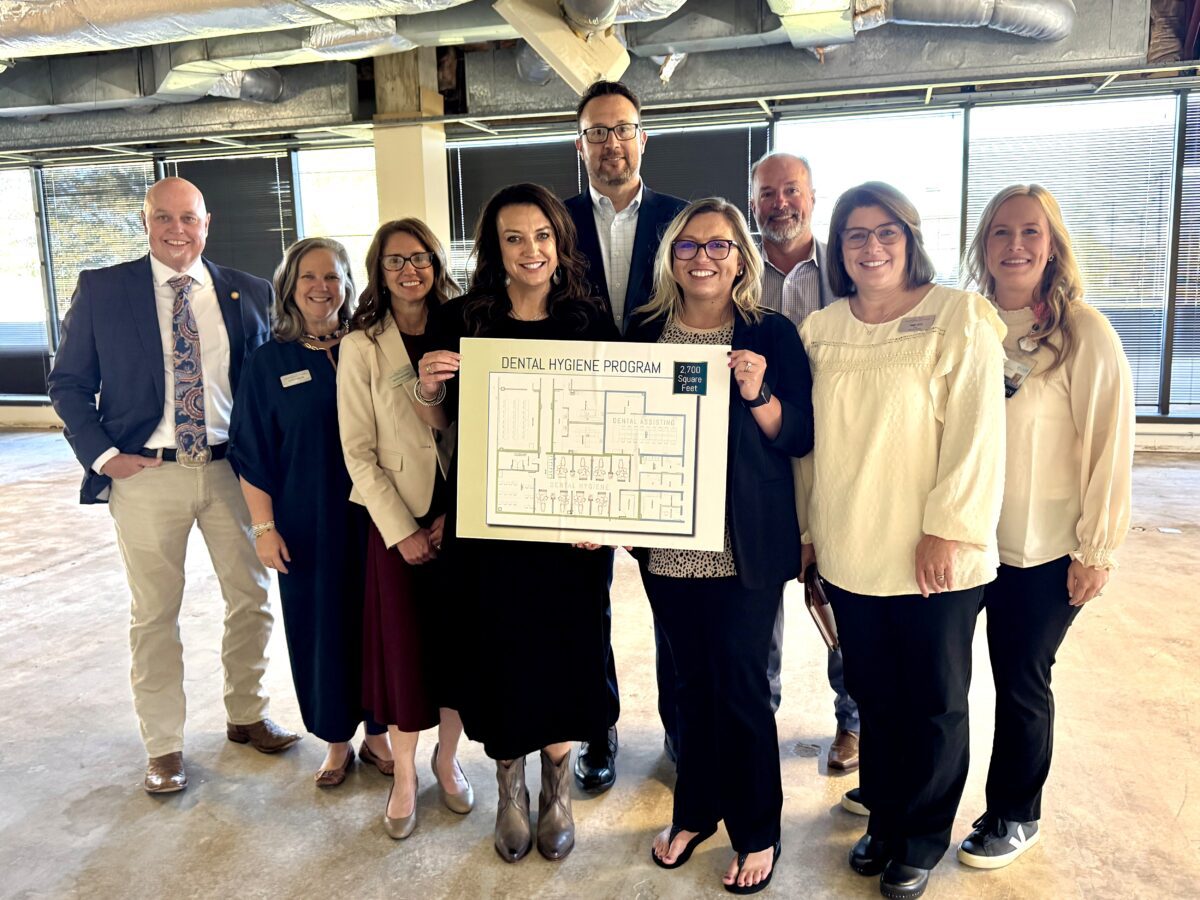
This article is part of EdNC’s fall 2025 “mini-blitz” to visit community colleges with presidents who began their tenure in the last two years. You can read all of our coverage of community colleges here and all of our coverage of community college presidents here.
The new president at Wilkes Community College has one goal. He wants to stabilize and grow enrollment.
“What do I always say?” Dr. Mike Rodgers asks members of his administrative council, which is what this community college calls its leadership team.
“Keep the students you’ve got,” says Kristen Macemore, the chief academic officer. And it is clear she has heard him say that a time or two.
In the first year of his first presidency, Rodgers and a cross-college task force came up with a strategic enrollment management plan.
The plan has four key performance indicators: enrollment, persistence, retention, and 150% completion, which means completing a course of study within one and half times its normal duration. Each component has a 5-year goal with a 1-year incremental goal, along with leading and lagging measures.
Importantly, “our plan,” as Rodgers refers to it, is not prescriptive, he said. “That’s the joy of it. Any one working at the college can figure out how the plan overlays to our daily work to move the needle on enrollment. Everybody plays a part.”
Rodgers started as president in June 2024, but students are already feeling the impact of the changes he and the council are making to the student experience.
Meet the students of Wilkes Community College
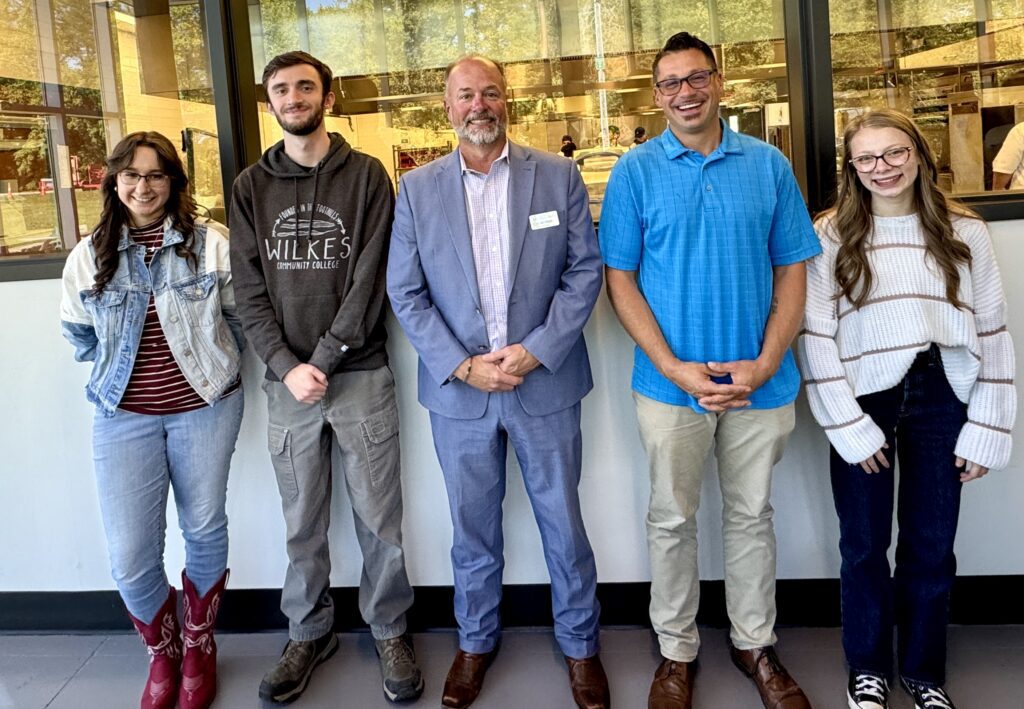
Students like Rodgers’ cowboy boots. But they also like that he is accessible. One talks about how he showed up at an awards ceremony and made a point to wait and shake each student’s hand. Another talks about a recent “pizza with the president” opportunity to get to know Rodgers better.
But it is not just the president who is showing up for students. It is also the faculty.
The challenges of enrollment: Meet Justin Nickelson
Justin Nickelson always meant to go to college, but he joined the military instead. After what he describes as a “place of darkness,” faith and recovery both played a role in getting him to community college with a dream to go to seminary.
Nickelson’s pastor at Crossfire United Methodist urged him to pursue his calling, even though Nickelson had a lot of anxiety and doubt about enrolling at age 33 since he hadn’t been in school since he was 17.
Nickelson said Meret Burke, a department chair at Wilkes Community College, really encouraged him at the beginning. But she didn’t just encourage him, he said — she practically had to teach him how to navigate higher education.
“She absolutely did more than she was called to do,” said Nickelson.
When he first got to the college, Nickelson said he had not used computers or software for years. “So I couldn’t even drive the LMS. It was overwhelming to me,” he said.
LMS stands for learning management system, and it is supposed to ease the student experience by offering an online hub for students and faculty to manage classes, share resources, track progress, and facilitate communicate. Nickelson’s story is a good reminder that it can also be perceived by adult learners as a challenge.
Nickelson also had to learn how to balance school with his full-time job in restoration services after fires and floods.
“These people here,” Nickelson said, “helped me have the faith to come back to school when I didn’t have the faith in myself to do it. The passion these teachers have — and their influence and their leadership — was exactly what someone like me needed to pursue higher education.”
Nickelson can now be found on the Dean’s List and the President’s List, and he has been inducted into the Phi Theta Kappa International Honor Society.
The challenges of persistence: Meet Ethan Jacko
Ethan Jacko found his way to Wilkes Community College after his family decided to move from an urban city to this more rural community. This is not his first community college. “The faculty here are different,” he noted.
On his first day of school at Wilkes, Jacko was near the library on campus when he noticed a 3D-printed cougar, the college’s mascot. 3D printing had long been Jacko’s hobby. Someone told him there was a whole lab of 3D printers up the hill. Jacko hiked right up there, met Bryan Hartzog, the lead instructor in the industrial engineering department, and Hartzog showed him the lab.
Jacko went on to complete his associate degree, but he still wasn’t sure what he wanted to do.
He found a home in Hartzog’s industrial engineering department where his interest in the trades grew. “I walked in not knowing what I wanted to do,” he said, “and now I will always have a job. I’ve got skill sets I know I can get paid good for.” He specializes in CAD (computer-assisted design) and CNC machining.
“I spend a lot of time in that department,” said Jacko. “I live in that building for the most part. They are like family how they treat you.”
“I’ve grown a lot,” he said. “Here, you get it done and then some. I’ve thrived.”
Locally, Jacko is known as one of the “engineering heroes” for a 3D printed prosthetic leg he helped design and create for Millie, a baby goat whose leg had to be amputated. It took about 6 hours and 18 minutes to print the two parts for the prosthesis and cost less than $20. A comparable product online would cost more than $800. Millie is now serving as a therapy animal, visiting hospitals and other local organizations working with children, veterans, and more.
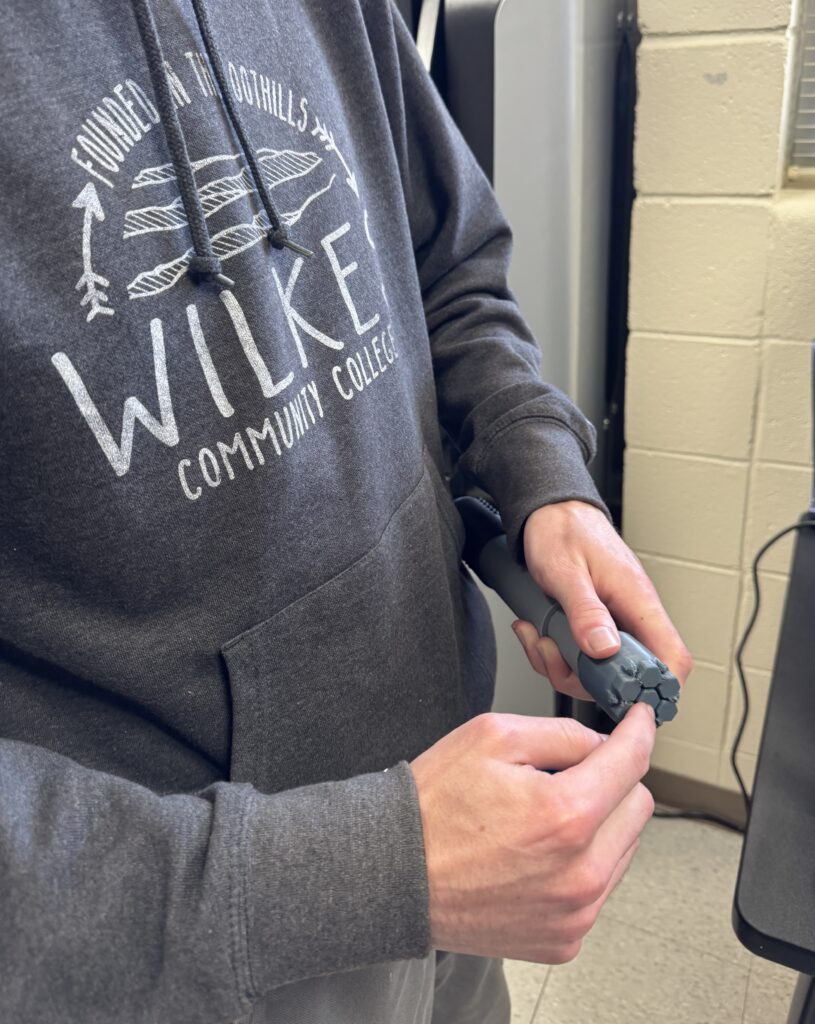
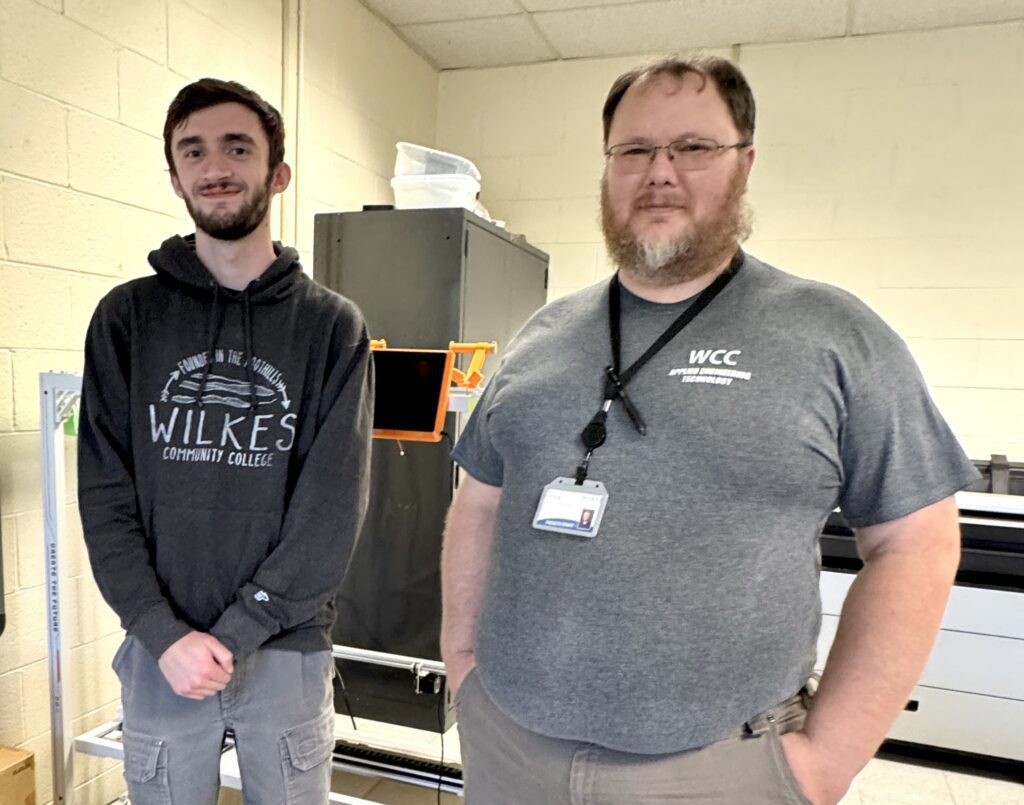
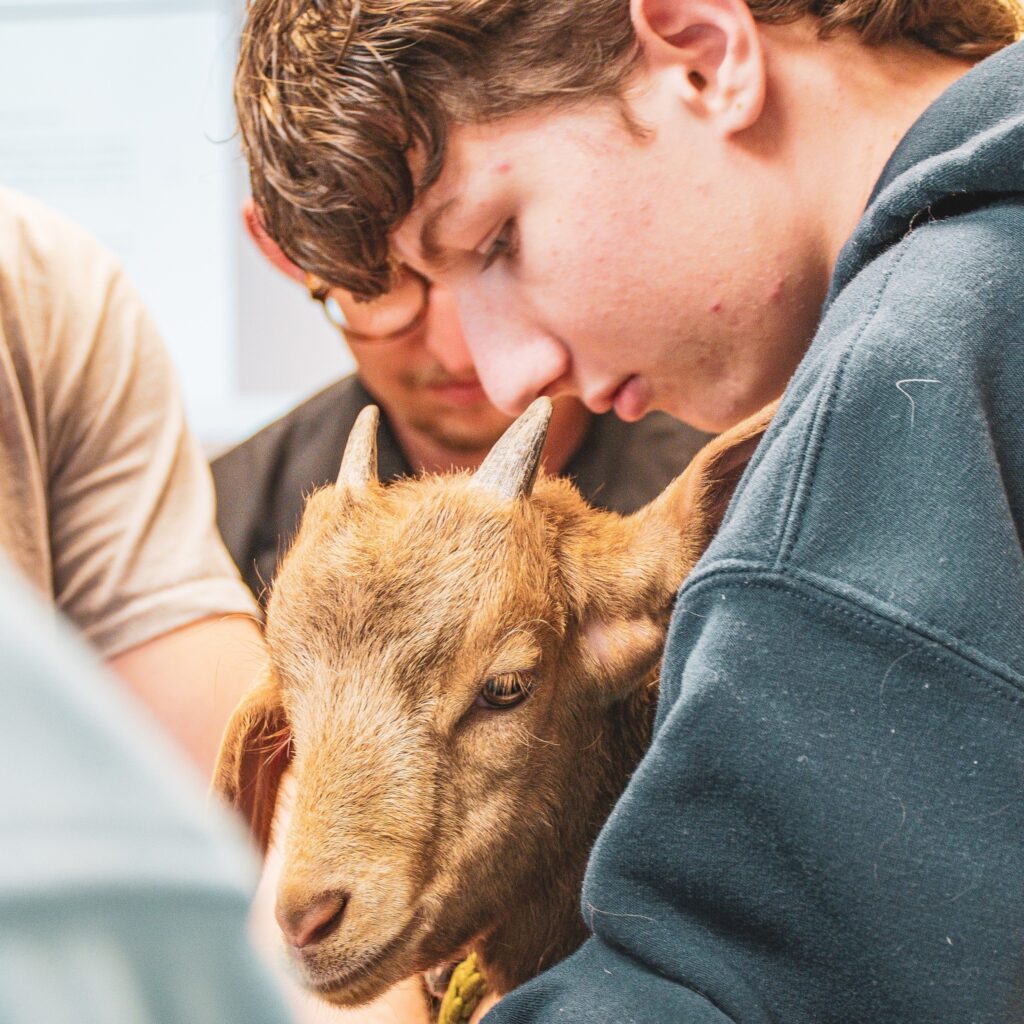
“They go the extra mile here,” said Jacko, noting that the faculty also provide counseling and guidance when it comes to “career stuff.”
“That has opened up so many doors for me from a career perspective,” he said.
The opportunities of retention: Meet Martha Holman
Martha Holman attended West Wilkes High School, where she had what she calls “the full high school experience.” In addition to being a straight-A student, she was a cheerleader and sang in the choir.
Music is Holman’s passion, and she wants to be an elementary music teacher. Next year, she hopes to transfer to Appalachian State University. She could have gone straight there, but she didn’t. Holman graduated high school with enough credits for the first year of her associate degree.
For local high school students like Holman, the WCC Education Promise provides a “two-year, last-dollar scholarship designed to ensure every qualifying student graduating from high school in Wilkes, Ashe, and Alleghany counties can get a college degree from Wilkes Community College tuition-free,” says the website. When it comes to retention, this financial support makes a difference for students who have been dually enrolled in high school and the community college.
Holman also credits the faculty. While all of her college classes were online during high school, she says the faculty created a compelling learning experience for the students through videos, embedding tutors in classes, and even coming to meet the students in person at the high school.
“They meet you exactly where you’re at and make sure you’re exactly where you need to be,” said Holman.
Holman also cites the support of student services and leadership opportunities through the student government association as part of her decision to continue on at Wilkes. She is excited about the upcoming fall festival.
Holman is currently enrolled in ACA 122 College Transfer Success. According to the course catalog, “This course provides information and strategies necessary to develop clear academic and professional goals beyond the community college experience.” Holman had just completed her plan, she said, which includes the classes she has taken and needs to take to transfer. Next, she will meet with her instructor for additional guidance.
“Upon completion,” says the catalog, “students should be able to develop an academic plan to transition successfully to senior institutions.”
The opportunities of completion: Students in the Wilkes Life & Work Skills Academy
The Wilkes Life & Work Skills Academy is in its second year of serving students with intellectual and/or developmental disabilities attending the community college.
“This two-year program provides students with the opportunity to explore careers and create a pathway for their future. Coursework will focus on employability, problem-solving, financial literacy, self-advocacy, independent living, job shadowing, internships, and more,” according to the website.
The first cohort had six students, and the cohort this year has 13 students.
Renee Macemore, the director of disability services, founded the program after seeing a gap. “Students just weren’t quite ready,” she said, to either work or take curriculum classes.
This program is closing that gap.
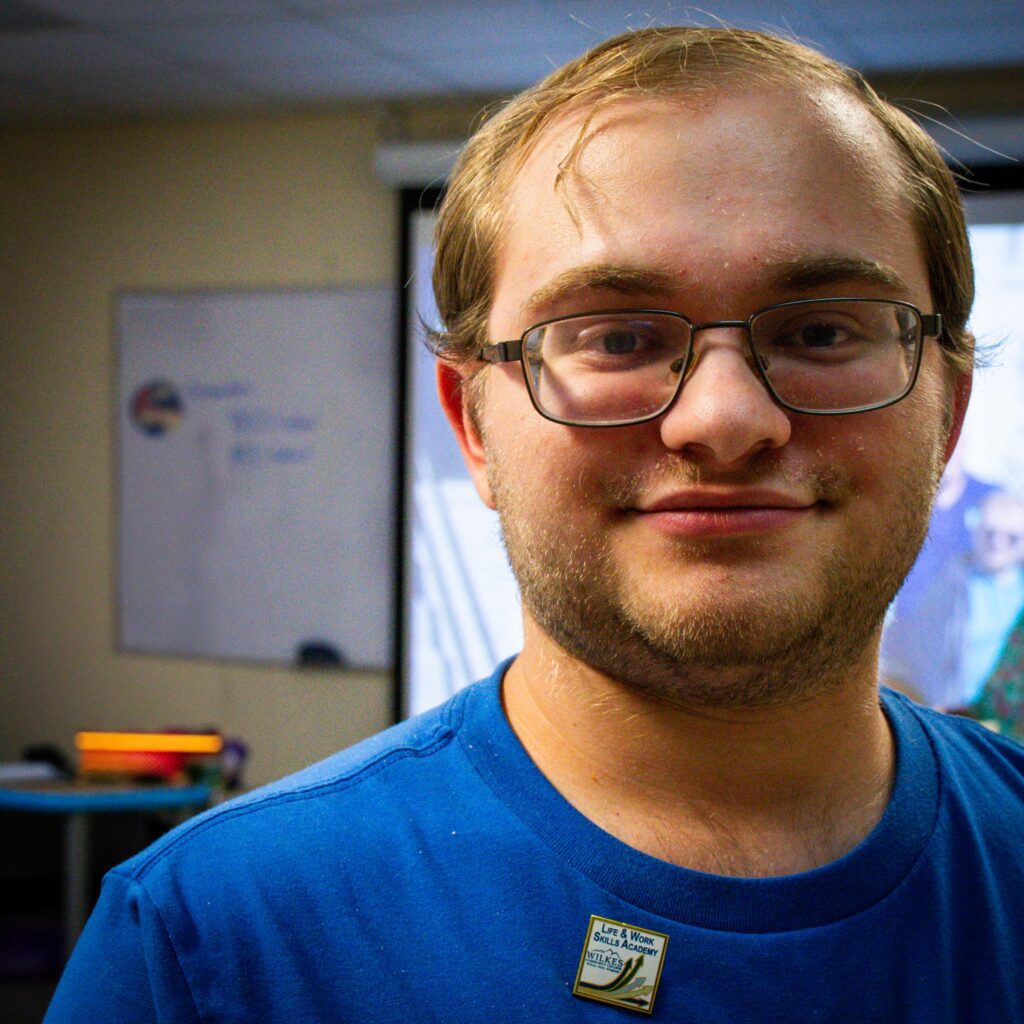
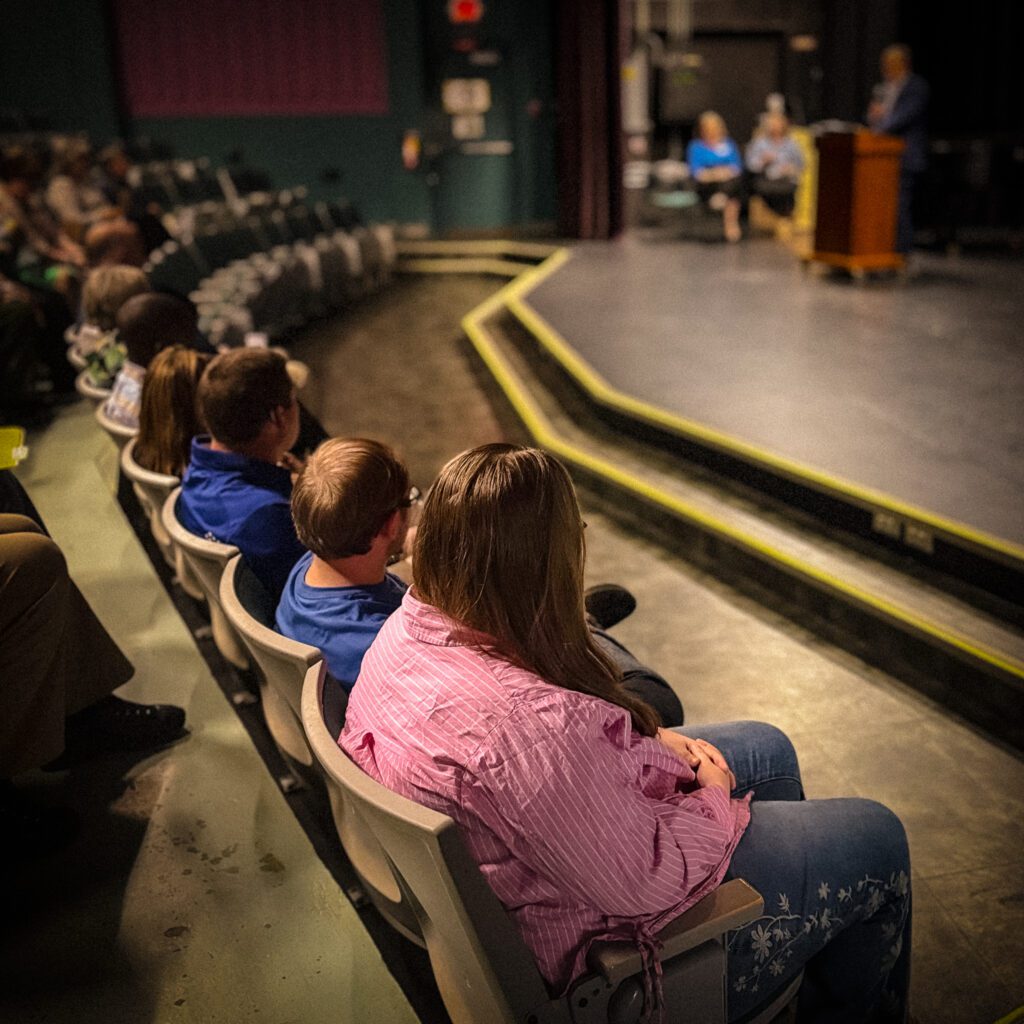
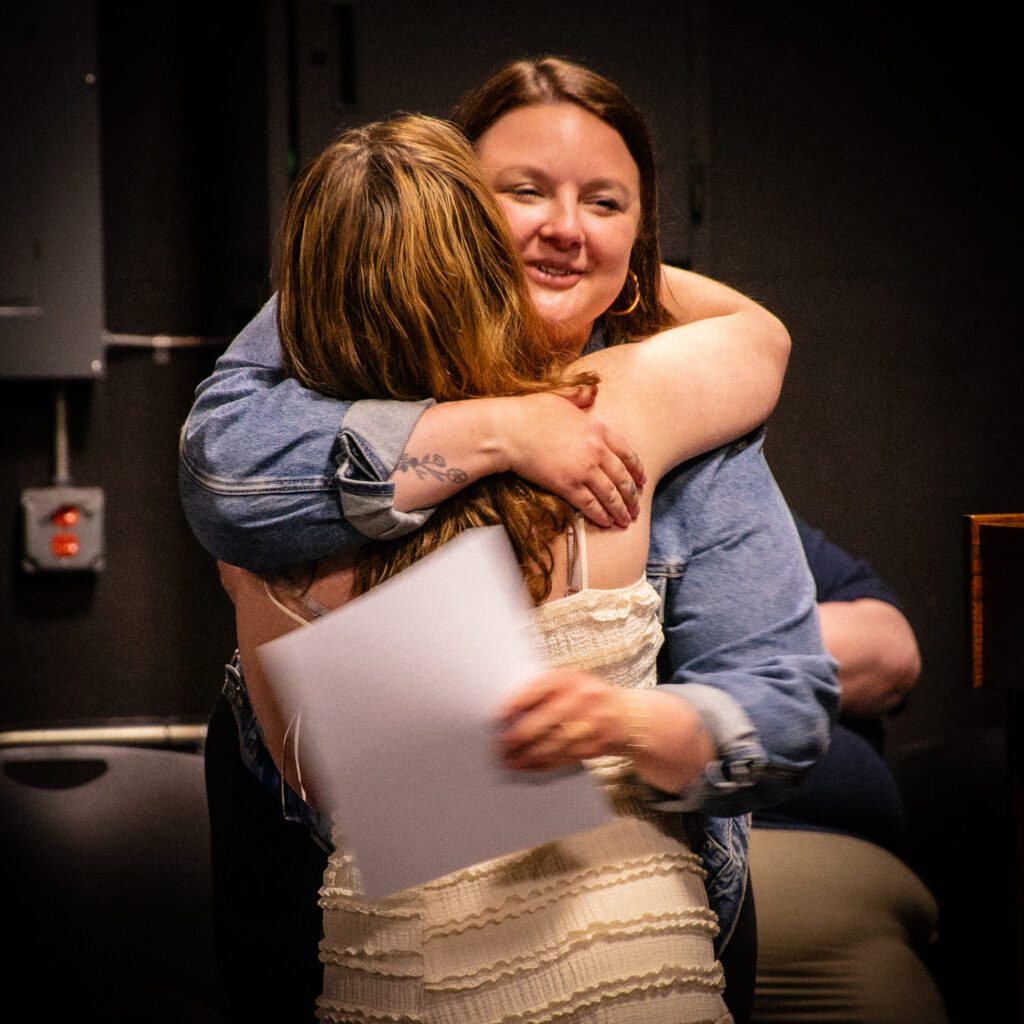
One of the students in the first cohort took horticulture classes and has now landed a job with the Army Corps of Engineers at the local dam.
Another student had an internship at the local YMCA, and they hired him even when they didn’t get a grant to support the position. He is working in the after-school program.
A third student is now working full time at a local nursing home.
The student experience of community college
Rodgers said the strategic enrollment management plan is all about creating “a gravitation pull for students to the community college” in fields that will meet the needs of the community and employers.
But that requires dollars.
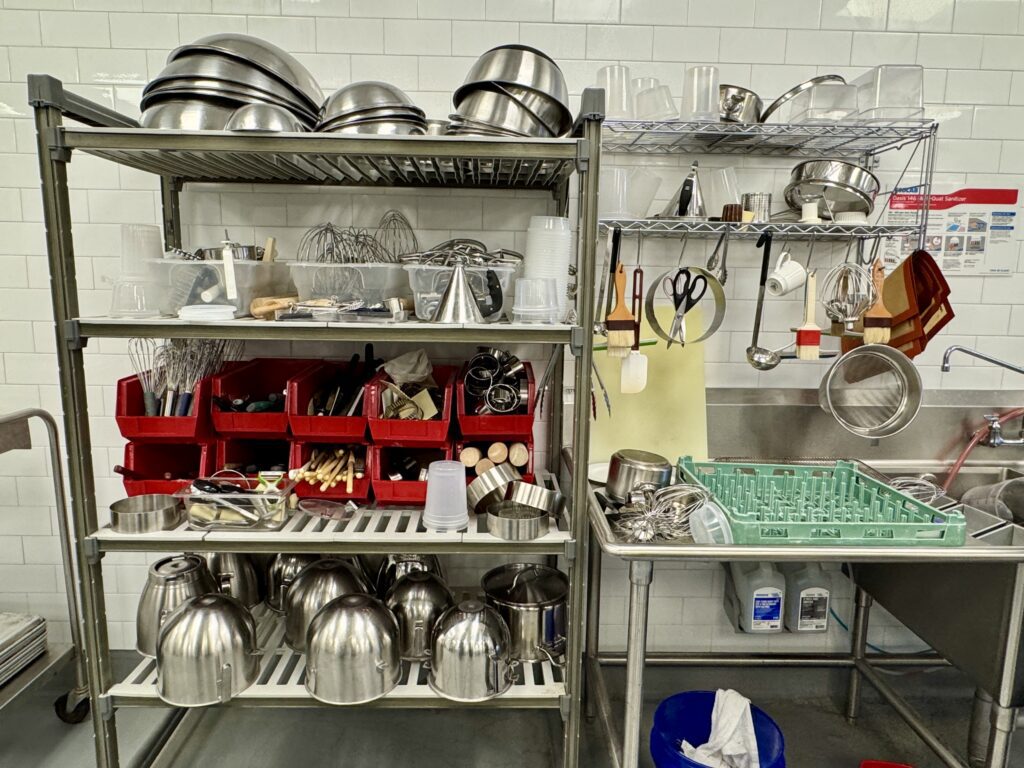
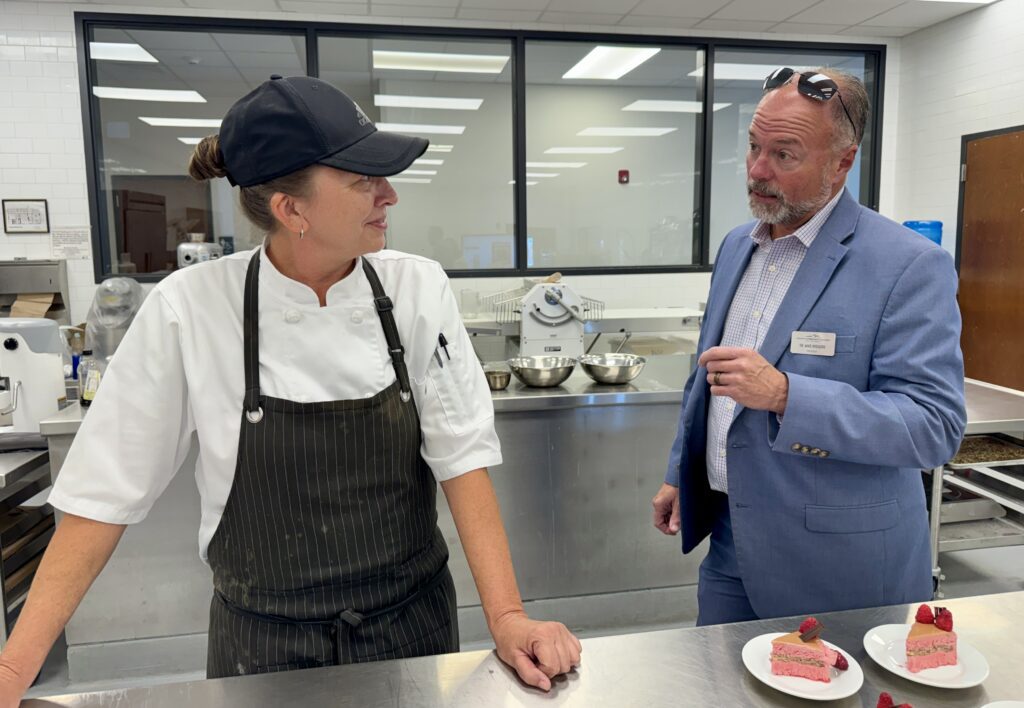
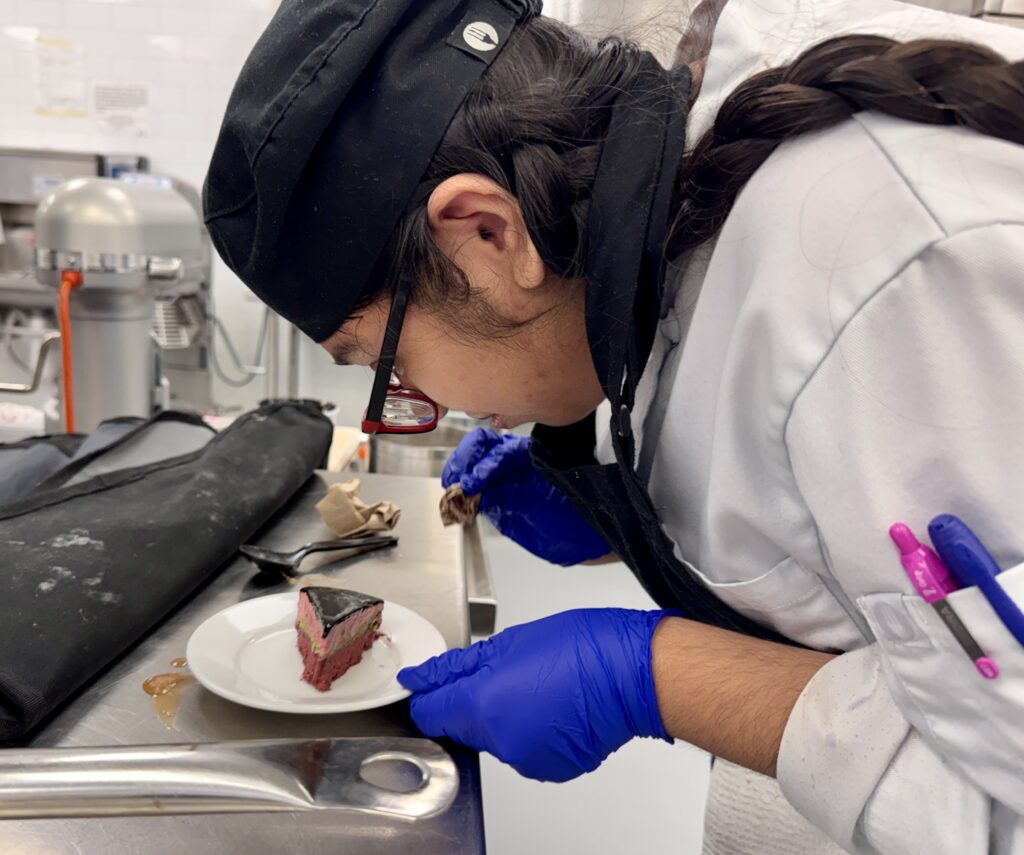
Wilkes Community College has an 8,000-square-foot, state of the art culinary lab with three professional kitchens. Led by Chef Celena Nilo, the training here equips students to serve “in a variety of foodservice settings, including full-service restaurants, hotels, resorts, clubs, catering operations, contract foodservice, and health care facilities,” according to the website.



Earlier this year, Audrey Bowles, a student, was inducted into the 2025 National Technical Honor Society for her excellence in baking and pastry arts. Her favorite thing to bake is Parisian-styled macarons, a meringue-based confection. She hopes to combine her love of baking with business to start her own bakery. Her work-based learning took place at Nickel Pickle’s Sweet Treats in Taylorsville.
The college also just graduated its first class of truck drivers. “There was no way we could afford a CDL (commercial driver’s license) program,” said Rodgers. Instead, he partnered with Caldwell Community College & Technical Institute to bring tractors over to serve students in the High Country.
The college has recently started a heavy equipment program to meet local industries needs, which required Rodgers and his team to secure two parcels to create a field lab. “There is only so much you can teach on campus,” he said. “You’ve got to get them in a real world environment.” There are currently 13 students in the program.
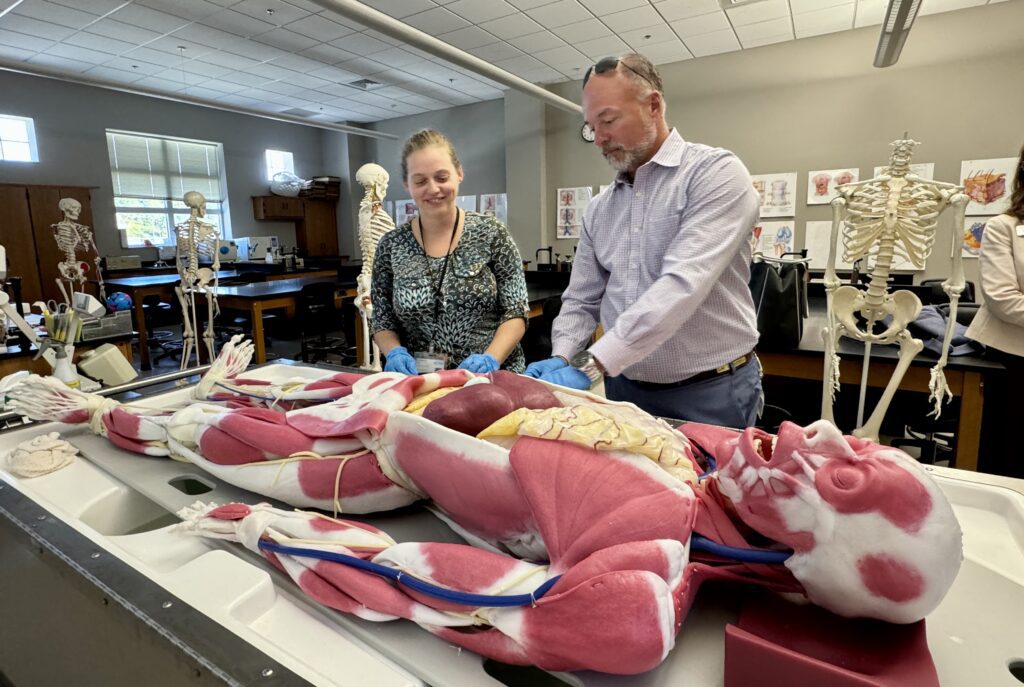
This SynDaver — “the apex of high fidelity medical simulation,” according to the company’s website — provides state of the art anatomy education.
Summer Jolly, the lead biology instructor, says anatomy instruction historically has been static, but the SynDaver allows students to interact with it — moving it, squeezing it, and taking out sutures to explore how the human body all fits together.
“This is way more impactful for students,” she says. “The students love it!”
Herring Hall — all 58,000 square feet of it — houses “all of the college’s health sciences programs — curriculum and continuing education — creating an integrated learning environment” for the students who will become the region’s health care workforce, serving more than 2,350 health care providers in northwest North Carolina, according to the website.
The simulation lab is where the magic happens, according to Tammy Beck, dean of health sciences. In the lab, Beck brings together students from across the health sciences disciplines for what she calls “interprofessional education.”
“That is so important,” she said, “because for them to go in the workforce they need to know the essential skills of their individual profession, but it’s very important for them to know how to work with other disciplines because they’re all part of the health care team.”
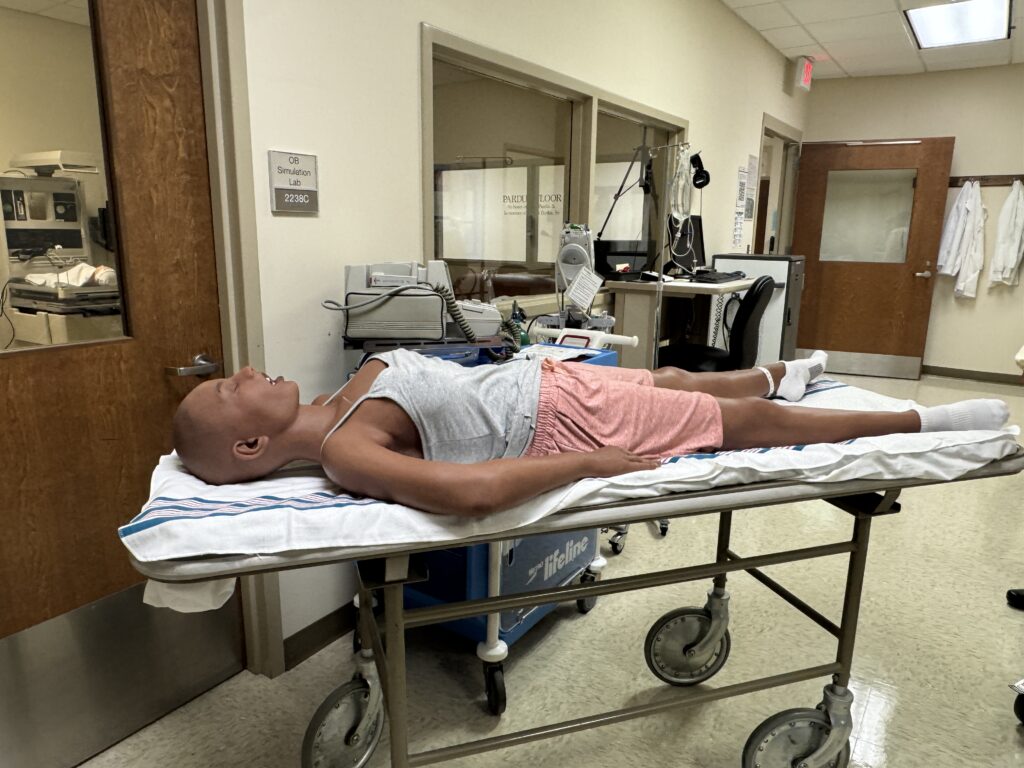
In the lab, for example, respiratory students might work with EMS students and nursing students on the same scenario. Working together as a team, Beck said, helps them understand their roles and responsibilities, improve communication, think through ethical decisions, and practice teamwork.
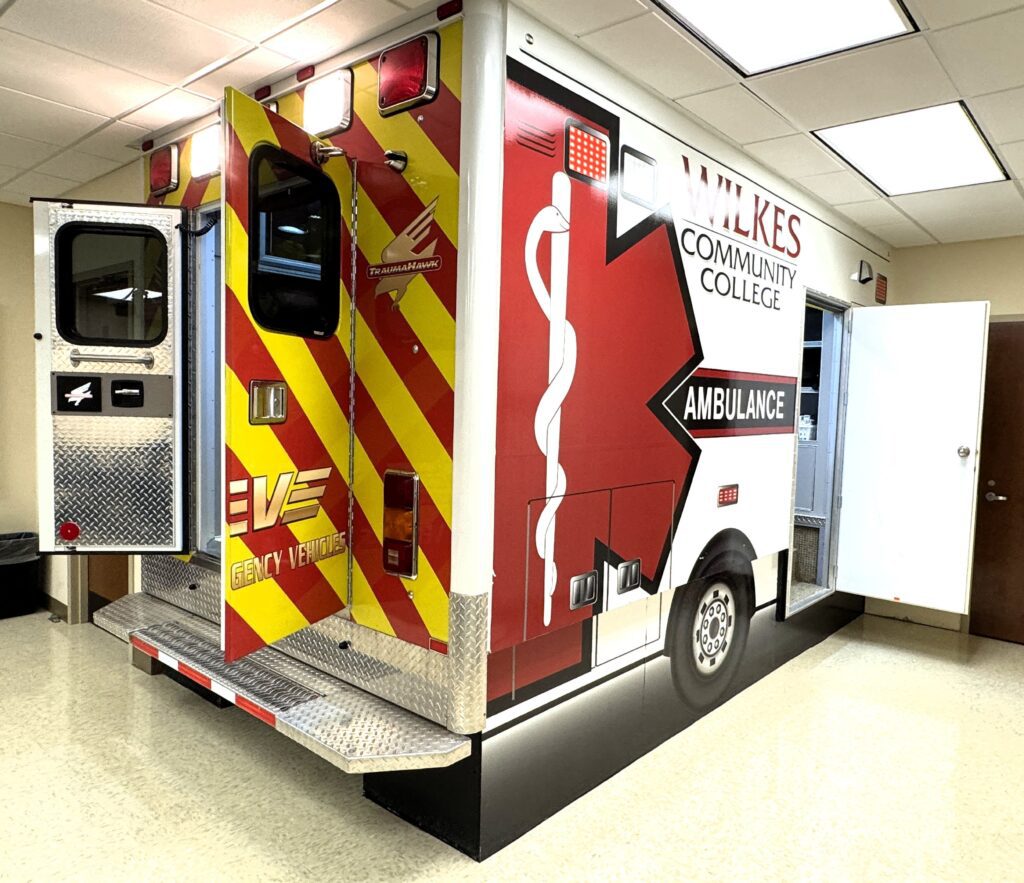
WCC even has an ambulance built into a classroom — they used a crane to hoist it up to the second floor of the building — providing an authentic learning space for EMS students.
The college’s radiography program is among the most competitive on campus. Last year, according to Beck, they had 234 applications and more than 100 qualified applicants for 12 spots. The capacity of the program is limited by the number of facilities locally where students can complete the clinical hours required for licensure, a geographic challenge compounded by a one-to-one student-to-technologist requirement.
Whether it’s the $116,000 SynDaver, the WCC Educational Promise which cost $292,542 in 2024-25, or the college’s new $1.4 million dental hygiene program, these investments in the student experience are all supported by the WCC Foundation, “a 501(c)(3) nonprofit organization, which exists solely to support and advance the objectives of Wilkes Community College by raising funds for scholarships, capital projects, staff and faculty development, and campus beautification.”
The foundation transferred $3,326,440 to the community college in 2024-25. EdNC has previously reported on the importance of local community college foundations and the role they play in financial health of a college and how well colleges are able to serve their students.
Lessons from the onboarding of a first-timer
Rodgers grew up in South Carolina, where he attended community college after completing his B.S. in chemistry.
A dean at that community college “saw something in me that I couldn’t see in myself. I guess he saw leadership,” said Rodgers. “The rest is history.”
Rodgers went on to get an Ed.D. in higher education leadership, and while this marks his 25th year in education, this is his first presidency after a nationwide search with 42 applicants. It’s also his first role in North Carolina.
He thinks of himself as a lifelong learner, and now, Rodgers finds himself learning to be a president.
Rodgers’ top 15 lessons
Rodgers strives to be approachable and relatable. Here are some lessons I gleaned from our conversation.
- Rodgers started meeting with members of the administrative council before he started the job. He refers to these conversations as “sidebars,” but says they helped him hit the ground running.
- On the first day, there are only two questions, a former mentor told Rodgers: for the CFO, “show me the money” and for the HR director, “where are the bodies buried.”
- Always ask the questions you don’t want the answers to.
- It takes a team.
- Make as few unilateral decisions as you can, but don’t let the team-approach prolong decision making.
- Listen for at least six months. Extend it to a year if needed. Use that time to get engaged with your college and your community.
- Don’t let yourself think you are the smartest person in the room.
- Beware of six words: “We’ve always done it this way.”
- Community colleges have to find a way to move at the speed of industry.
- Ask often, “What can the community college do for you?”
- Understand that “nowhere is our biggest enemy.” That’s students who go nowhere; not to college, not to a job.
- Professional development cannot be forced.
- Being prescriptive keeps your leadership team from having the space to lean into their own growth mindset. Rodgers creates the space for them to analyze and solve problems, asking to be looped in only when they hit a barrier.
- That allows him to spend 50% of his time out in the community.
- Most importantly, he said, “Fail together, grow together.”
Rodgers kicked off his tenure by listening, and it was that process that led to both retention of the college’s administrative council and the commitment of the council and the community college to the student enrollment management plan.
Thanks to the support of the John M. Belk Endowment, Rodgers says there is support for new presidents in North Carolina that is “totally different” from other states. The North Carolina Association of Community College Presidents and the Belk Center for Community College Leadership and Research partner to provide “leadership development programs and resources for community college presidents to improve student success and navigate changing landscapes in higher education.”
Rodgers says new presidents are given a mentor, and he calls his mentor — Dr. Mark Poarch, the president of Caldwell Community College & Technical Institute — “a wealth of knowledge.”
“He loves to collaborate. He’ll help you out anyway he can,” said Rodgers.
Rodgers also highlights the cohort of 58 presidents, finding them to be welcoming and also willing to help. “You know who to lean on, you know who to ask questions,” he said.
“As a new president, this support allowed me to quickly overcome the learning curve coming in to North Carolina,” said Rodgers.
Leaders locally have also been supportive. Rodgers has been investing about half of his time building relationships in the three counties the community college serves — Wilkes, Ashe, and Allegheny. On a recent Saturday, Rodgers donned the community college’s cougar costume and walked around the local apple festival.
While EdNC was visiting Wilkes Community College, Sen. Eddie Settle, R-Wilkes, who also was wearing cowboy boots, happened to stop by.
“He fits,” says Settle of Rodgers’ leadership. “He’s fitting in just perfect here.”
Editor’s note: The John M. Belk Endowment supports the work of EducationNC.
Recommended reading

